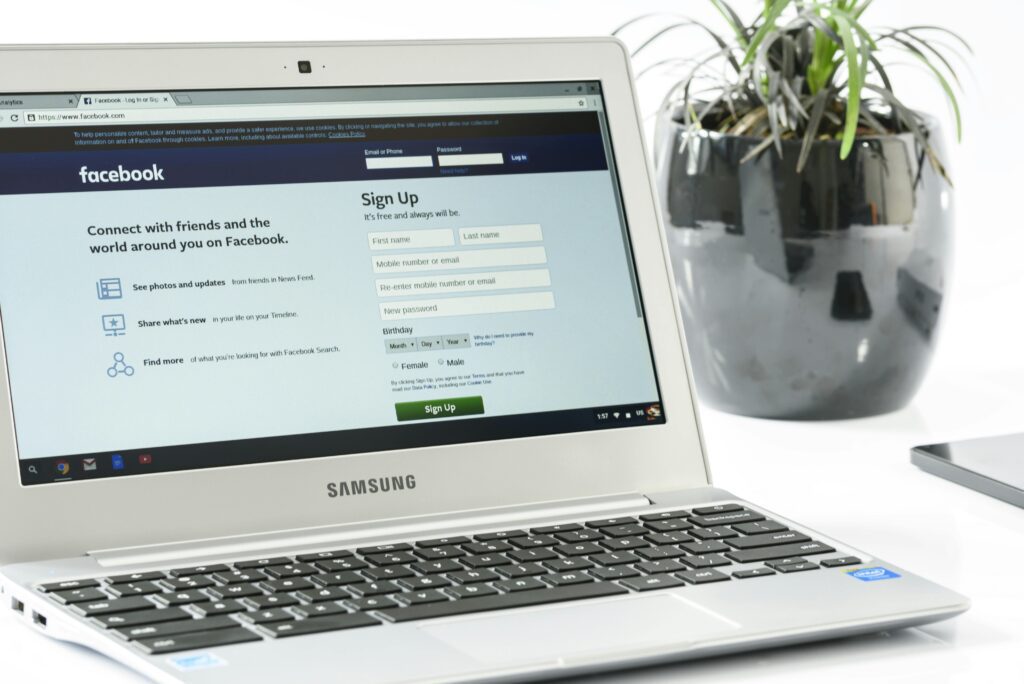Advertising Automation KPIs Every Marketer Should Track
Picture this: companies are crushing it with $5.44 back for every dollar they spend on marketing automation! Meanwhile, 80% of businesses are generating more leads than ever before, and they’re saving a whopping 80% of their time on those tedious manual tasks. These aren’t just feel-good numbers – they’re proof that smart advertising automation paired with the right KPI tracking can transform your business from surviving to absolutely thriving.
Here’s the exciting part: 75% of businesses are already jumping on the marketing automation bandwagon, and there’s never been a better time to join them. However, without tracking the right metrics, you’re essentially driving blindfolded in today’s competitive digital world. Every marketing dollar matters, and smart business owners know that success isn’t just about having the tools – it’s about measuring what works.
Get ready to discover twelve game-changing advertising automation KPIs that will revolutionize how you track performance, save both time and money, and turn your marketing investments into serious revenue growth. These aren’t just metrics – they’re your roadmap to marketing success!
The Money-Making Machine: Return on Ad Spend
Return on Ad Spend (ROAS) is your ultimate profit detector! This superstar metric tells you exactly how much money your ads are making for every dollar you invest. Think of it as your personal revenue thermometer – when it’s hot, you’re making money, and when it’s cold, it’s time to make changes.
Here’s the beautiful simplicity: divide your ad revenue by your ad spend, then multiply by 100. Spend $1,000 and make $4,000? Congratulations, you’ve got a fantastic 4:1 ROAS! The tricky part is figuring out which sales to credit to your ads, but that’s where smart attribution models come to the rescue.
Marketing automation makes ROAS tracking absolutely magical. These systems automatically track revenue across multiple touchpoints, giving you real-time calculations that let you optimize campaigns while they’re running. Plus, they’ll send you alerts when performance drops, so you can fix problems before they hurt your bottom line. This directly tackles the budget worries that 58% of marketers face when choosing automation platforms – ensuring every advertising dollar works harder for your business.
The Lead Quality Champion: MQL to SQL Conversion Rate
MQL to SQL conversion rate is like having a crystal ball for your sales success! This fantastic metric shows you what percentage of your Marketing Qualified Leads actually become Sales Qualified Leads. It’s the perfect bridge between your marketing magic and actual sales revenue.
The math is refreshingly simple: divide your SQLs by your MQLs and multiply by 100. A strong conversion rate typically sits between 20-40%, though this varies by industry. For B2B companies, hitting 31% means roughly one in three marketing-qualified leads should progress to sales qualification when your automation is firing on all cylinders.
Marketing automation absolutely transforms this conversion rate through sophisticated lead scoring systems. These smart systems track everything from website visits to email opens, automatically identifying when leads are truly ready for sales conversations. Furthermore, automation ensures consistent follow-up sequences that nurture leads through personalized content journeys. This systematic approach prevents leads from slipping through the cracks and addresses the challenge where many CMOs struggle with hands-on marketing automation experience.
The Future Fortune Finder: Customer Lifetime Value
Customer Lifetime Value (CLV) represents the total treasure you can expect from each customer throughout their entire relationship with your business. This strategic powerhouse shifts your focus from quick transactions to building lasting, profitable relationships that keep growing over time.
The calculation combines your average purchase value, purchase frequency, and customer lifespan. For example, if customers spend $100 per purchase, buy twice yearly, and stay for three years, their CLV equals $600. However, successful CLV tracking requires sophisticated data collection that marketing automation makes incredibly easy.
Marketing automation supercharges CLV tracking by creating comprehensive customer profiles capturing every interaction across multiple touchpoints. This technology enables predictive analytics that forecast future customer value based on historical patterns, helping you identify which customers deserve the most attention. Additionally, automation facilitates personalized retention campaigns that boost both purchase frequency and customer lifespan. Research shows 81% of companies actively monitoring CLV generate more sales than those who don’t, proving how this metric directly translates to improved business performance.
The Conversion Commander: Conversion Rate Optimization
Conversion rate measures what percentage of your website visitors actually take the action you want them to take. This ultimate test shows how effectively your automated campaigns guide prospects toward purchase decisions, transforming website traffic from a vanity metric into meaningful business results.
The basic formula divides conversions by total visitors and multiplies by 100. While the average conversion rate across industries hovers around 2.35%, top performers achieve rates of 11% or higher. This means there’s massive room for improvement through strategic optimization, though rates vary significantly by industry, traffic source, and device type.
Marketing automation revolutionizes conversion optimization by enabling dynamic content personalization based on visitor behavior and demographics. Automated A/B testing continuously optimizes headlines, images, and calls-to-action while you focus on other priorities. Additionally, automation facilitates sophisticated lead nurturing sequences that warm up prospects before they reach conversion pages. This addresses the common challenge where 47% of marketers find it difficult to attribute leads to revenue, providing crystal-clear visibility into which automated touchpoints contribute most effectively.
The Engagement Powerhouse: Email Marketing Metrics
Email marketing metrics – including open rates, click-through rates, and click-to-open rates – reveal how effectively your automated email campaigns engage and convert subscribers. These metrics remain absolutely crucial because email marketing accounts for 21% of all marketing revenue, and automated campaigns consistently outperform one-time sends.
Open rates measure the percentage of recipients who open your emails, with industry averages ranging from 35-42% depending on your sector. Click-through rates, typically between 2-5%, show how compelling your email content is in driving action. The click-to-open rate reveals engagement quality among your most interested subscribers. These metrics work together to paint a complete picture of campaign effectiveness.
Marketing automation transforms email marketing from basic batch-and-blast approaches into sophisticated, behavioral-triggered communications. Automated systems adjust send times based on individual subscriber patterns, personalize subject lines and content based on past interactions, and automatically segment audiences for maximum relevance. This level of personalization addresses the fact that 77% of marketers use automation tools to create personalized content, ensuring your messages resonate with recipients and drive higher engagement rates.
The Social Media Success Squad: Engagement Rate and Reach
Social media engagement rate and reach work together as your dynamic duo for measuring automated social media success. While reach shows how many people see your content, engagement rate reveals how compelling that content is in generating meaningful interactions – likes, comments, shares, and clicks.
Engagement rate calculation divides total engagements by total reach or impressions, then multiplies by 100. A strong engagement rate varies by platform but generally falls between 1-5% for most industries. Reach measurement tracks unique users who see your content, providing insight into brand visibility and audience growth potential through automated posting strategies.
Marketing automation revolutionizes social media management by scheduling optimal posting times based on audience activity patterns, automatically responding to common customer inquiries, and tracking performance across multiple platforms from a single dashboard. This technology addresses the significant time investment challenge, as companies using automation can save more than six hours each week on social media management alone. Additionally, automated monitoring tracks brand mentions and sentiment, providing valuable insights for customer service and reputation management.
The Content Performance Powerhouse: Content Marketing ROI

Content marketing ROI measures the revenue generated and costs saved through your content efforts compared to creation and distribution investments. This metric is particularly crucial because content marketing generates three times more leads per dollar spent than traditional advertising, yet 46% of marketers don’t track their content marketing ROI.
Content marketing ROI calculation subtracts content costs from attributed revenue, then divides by total costs. For example, if content costs $5,000 and generates $20,000 in attributed revenue, your ROI is 300%. However, tracking content ROI requires sophisticated attribution modeling because content often influences purchases across extended timeframes and multiple touchpoints.
Marketing automation enhances content ROI tracking by automatically tagging and tracking content performance across distribution channels, measuring engagement metrics indicating effectiveness, and attributing conversions to specific content pieces. Automated systems also optimize content distribution timing and channels based on performance data, ensuring maximum ROI from every piece created. This systematic approach helps demonstrate content value to stakeholders and addresses the challenge where 33% of marketers report difficulty measuring ROI due to data integration issues.
The Lead Quality Gateway: Lead Scoring and Attribution
Lead scoring assigns numerical values to prospects based on their demographic fit and behavioral engagement, enabling your automation systems to prioritize sales efforts on the most promising opportunities. This fantastic KPI transforms subjective lead qualification into an objective, scalable process that improves over time.
Effective lead scoring considers both explicit information like job title and company size, plus implicit behaviors like website visits and email engagement. Scores typically range from 0-100, with thresholds set for marketing qualified leads (usually 40-60 points) and sales qualified leads (typically 70+ points). The key is regularly calibrating your scoring model based on actual conversion data.
Marketing automation makes lead scoring incredibly sophisticated by automatically tracking dozens of behavioral signals, updating scores in real-time as prospects engage, and triggering appropriate follow-up actions based on score changes. This technology addresses the challenge where most companies don’t have marketing automation specialists on-hand by providing built-in best practices and templates. Additionally, automated lead scoring ensures consistent evaluation criteria across all prospects, eliminating subjective variability.
The Website Performance Watchdog: Traffic and Bounce Rate
Website traffic metrics and bounce rate provide essential insights into how effectively your automated marketing campaigns drive qualified visitors and keep them engaged. These metrics serve as early indicators of campaign performance and user experience quality.
Website traffic measurement includes unique monthly visitors, traffic sources, and page views. Bounce rate measures the percentage of visitors who leave after viewing only one page. Average bounce rates range from 41-55% across industries, with lower rates generally indicating better content relevance and user experience. However, bounce rates should be evaluated in context – a high bounce rate on a contact page might indicate success.
Marketing automation enhances website performance tracking by automatically tagging traffic sources for accurate attribution, setting up conversion funnels that identify where visitors drop off, and triggering retargeting campaigns for visitors who don’t convert initially. This comprehensive approach addresses the challenge that 42% of marketers don’t know the right metrics to measure performance, providing clear visibility into which automated campaigns drive the most valuable traffic.
The Cost Efficiency Calculator: Cost Per Lead and Cost Per Acquisition
Cost Per Lead (CPL) and Cost Per Acquisition (CPA) measure the financial efficiency of your marketing automation by tracking spending per lead generated and customer acquired. These metrics directly impact your bottom line and help optimize budget allocation across different marketing channels and campaigns.
CPL calculation divides total marketing spend by leads generated, while CPA divides total spend by customers acquired. Industry averages vary significantly, but a general rule suggests CPA should be no more than 20-30% of customer lifetime value to maintain healthy profit margins. However, these metrics become more valuable when tracked over time and compared across different strategies.
Marketing automation improves CPL and CPA tracking by automatically attributing leads and customers to specific campaigns, channels, and touchpoints, providing granular visibility into which investments deliver the best returns. Automated systems also optimize bid strategies and budget allocation in real-time based on performance data. This capability is particularly valuable given that companies using automation see a 12% reduction in marketing costs on average, demonstrating how proper tracking and optimization significantly improve cost efficiency.
The Revenue Attribution Architect: Multi-Touch Attribution
Multi-touch attribution models track and assign value to every touchpoint in your customer’s journey, providing comprehensive insight into how different marketing automation campaigns work together to drive conversions. This sophisticated approach moves beyond simple first-click or last-click attribution to reveal true customer journey complexity.
Multi-touch attribution models include linear (equal credit to all touchpoints), time decay (more credit to recent interactions), position-based (emphasis on first and last touches), and algorithmic approaches using machine learning for optimal credit distribution. The choice depends on your sales cycle length, customer journey complexity, and available data sophistication.
Marketing automation platforms make multi-touch attribution practical by automatically tracking all customer interactions across email, social media, website visits, content downloads, and paid advertising. This comprehensive data collection enables accurate attribution modeling that would be impossible to maintain manually. Additionally, automated attribution helps identify which marketing sequences are most effective at different customer journey stages, enabling optimization of entire campaign ecosystems rather than individual tactics.
The Customer Retention Revolution: Churn Rate and Retention Metrics
Churn rate and retention metrics measure how effectively your marketing automation maintains customer relationships and prevents attrition. These metrics are particularly crucial because acquiring new customers costs 5-25 times more than retaining existing ones, making retention optimization one of the highest-ROI activities for most businesses.
Churn rate calculation divides customers lost during a period by total customers at the beginning of that period, typically expressed as monthly or annual percentage. Retention rate is simply 100% minus churn rate. Industry benchmarks vary dramatically, but monthly churn rates below 5% generally indicate healthy customer retention for most subscription-based businesses.
Marketing automation revolutionizes retention by implementing triggered campaigns for at-risk customers, personalizing communication based on usage patterns and preferences, and automatically deploying win-back campaigns for churned customers. Advanced automation can identify early warning signs of churn through behavioral analysis and trigger intervention campaigns before customers actually leave. This proactive approach supports the finding that companies using automation for lead nurturing see a 20% increase in sales opportunities.
The Performance Dashboard: Real-Time Reporting and Analytics
Real-time reporting and analytics serve as the nervous system of your marketing automation, providing immediate visibility into campaign performance and enabling rapid optimization based on actual data rather than assumptions. This comprehensive KPI encompasses all other metrics within an integrated monitoring framework.
Effective reporting includes automated dashboards that update in real-time, customizable alerts for performance thresholds, and integrated analytics showing relationships between different metrics. The key is focusing on actionable insights rather than data for data’s sake, ensuring every metric tracked has a clear connection to business objectives and optimization opportunities.
Marketing automation platforms excel at real-time reporting by automatically collecting data from all marketing channels, creating visual dashboards that highlight trends and anomalies, and sending automated alerts when metrics exceed or fall below predetermined thresholds. This comprehensive monitoring addresses the challenge where 69% of marketing decision-makers plan to increase their investments in marketing automation, providing visibility needed to justify and optimize those investments.
Transform Your Marketing Success Today
The advertising automation landscape has completely revolutionized how smart business owners approach marketing efficiency and ROI optimization. By tracking these twelve essential advertising KPIs – from ROAS and conversion rates to customer lifetime value and retention metrics – you’re equipped with the data-driven foundation necessary to transform your marketing automation from a cost center into a profit-generating powerhouse.
The evidence is absolutely overwhelming: companies implementing comprehensive KPI tracking see $5.44 return for every $1 spent on marketing automation, while 80% report generating more leads and saving up to 80% of their time on manual campaign management. These aren’t just impressive statistics – they represent real business transformation opportunities available to every organization willing to embrace systematic measurement and optimization.
Moving forward, start by selecting three to five KPIs that most directly align with your current business objectives, implement automated tracking systems for consistent data collection, and establish regular review cycles to optimize performance based on insights gained. Remember that successful marketing automation isn’t about tracking every possible metric – it’s about monitoring the right KPIs that drive meaningful business growth and continuous improvement in your marketing efficiency.
How many KPIs should I track when starting with advertising automation?
Start with 3-5 core KPIs that directly align with your primary business objectives rather than trying to track everything at once. Most successful businesses begin with conversion rate, cost per acquisition, and customer lifetime value, then gradually expand their tracking as their automation systems mature. This focused approach prevents analysis paralysis while ensuring you monitor metrics that directly impact your bottom line.
What’s a realistic timeline for seeing ROI improvements from KPI tracking?
Most businesses see measurable improvements within 6 months of implementing systematic KPI tracking, with 76% of companies generating positive ROI within the first year. However, some metrics like email engagement and website traffic may show improvements within weeks, while others like customer lifetime value require longer observation periods. The key is maintaining consistent tracking and optimization efforts rather than expecting immediate dramatic changes.
How can small businesses implement KPI tracking without breaking their budget?
Many marketing automation platforms offer affordable entry-level plans starting around $50-100 per month that include essential KPI tracking capabilities. Additionally, free tools like Google Analytics provide robust tracking for website and conversion metrics, while social media platforms offer built-in analytics for engagement tracking. The focus should be on choosing tools that grow with your business rather than trying to implement enterprise-level solutions immediately. Remember that 58% of marketers prioritize price as the most important factor when selecting automation platforms, so budget-conscious options delivering core functionality are widely available.
read more
Boost Revenue Now: Essential Advertising KPIs Every CEO Uses
Advertising Automation KPIs Every Marketer Should Track Picture this: companies are crushing it with $5.44 back…
10 Game-Changing Facebook Ads Workflows for 2025 Growth
Picture this: 76% of businesses using Facebook ads workflows slash their campaign management time by 30%….
10 Deadly Retargeting Mistakes Business Owners Make
Did you know that retargeting campaigns can boost conversion rates by up to 150%? Yet many…
10 Invoice Automation Workflows That Skyrocket Cash Flow Now
Are you still stuck with paper invoices and typing in data by hand? Here’s a…
Revolutionary: 10 Social Media Automation Strategies Crushing Competition
Imagine this: you’re staring at your calendar, heart racing as you realize your biggest event…
10 Hidden Price drop Automation Secrets Competitors Don’t Know
Did you know that 77% of businesses using marketing automation see increased conversion rates, while…






